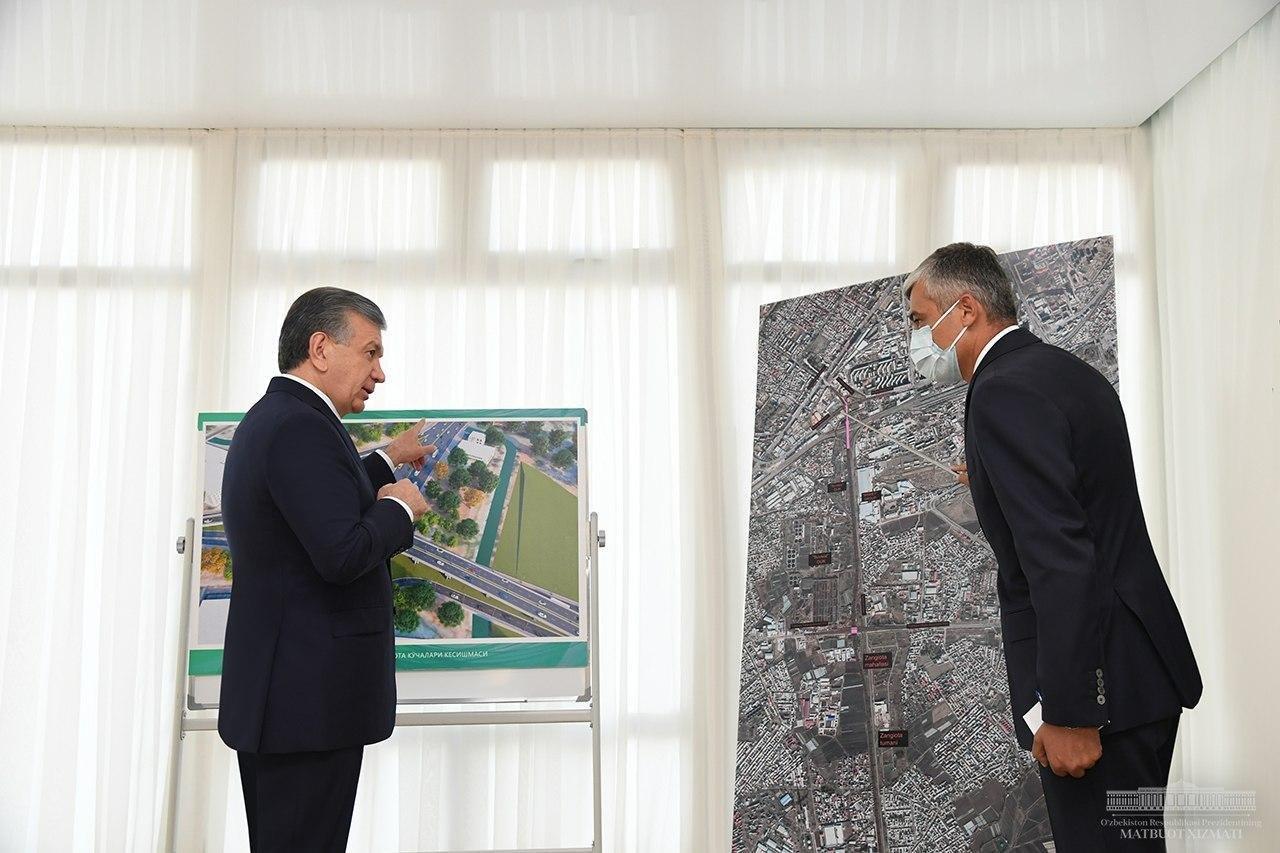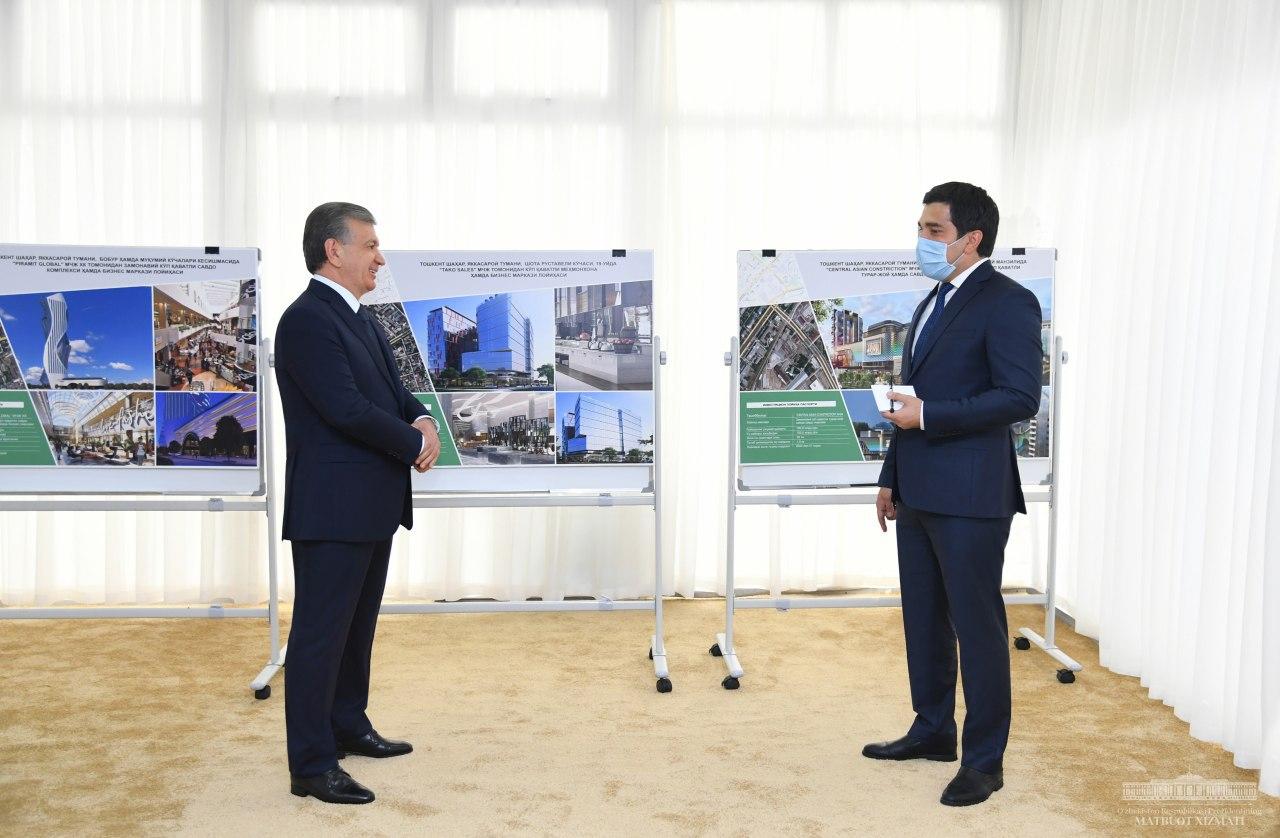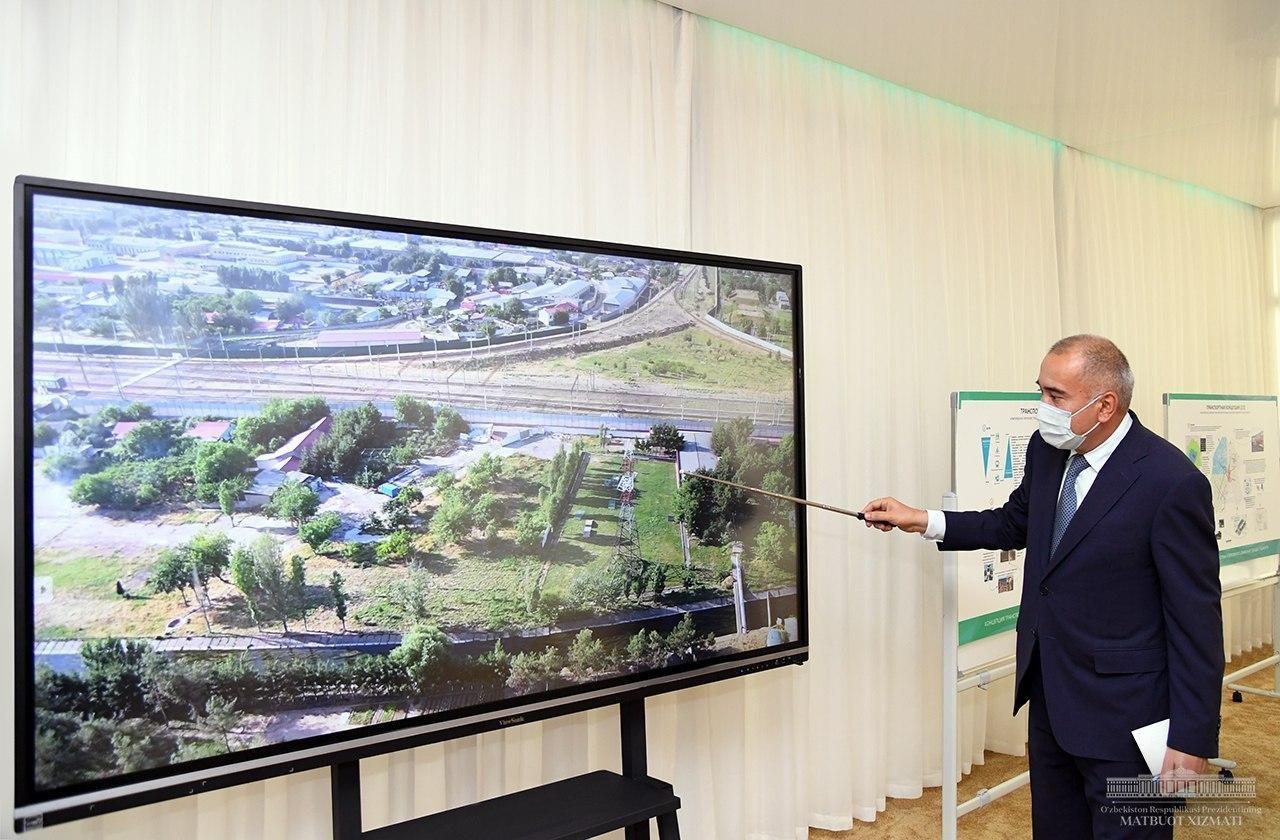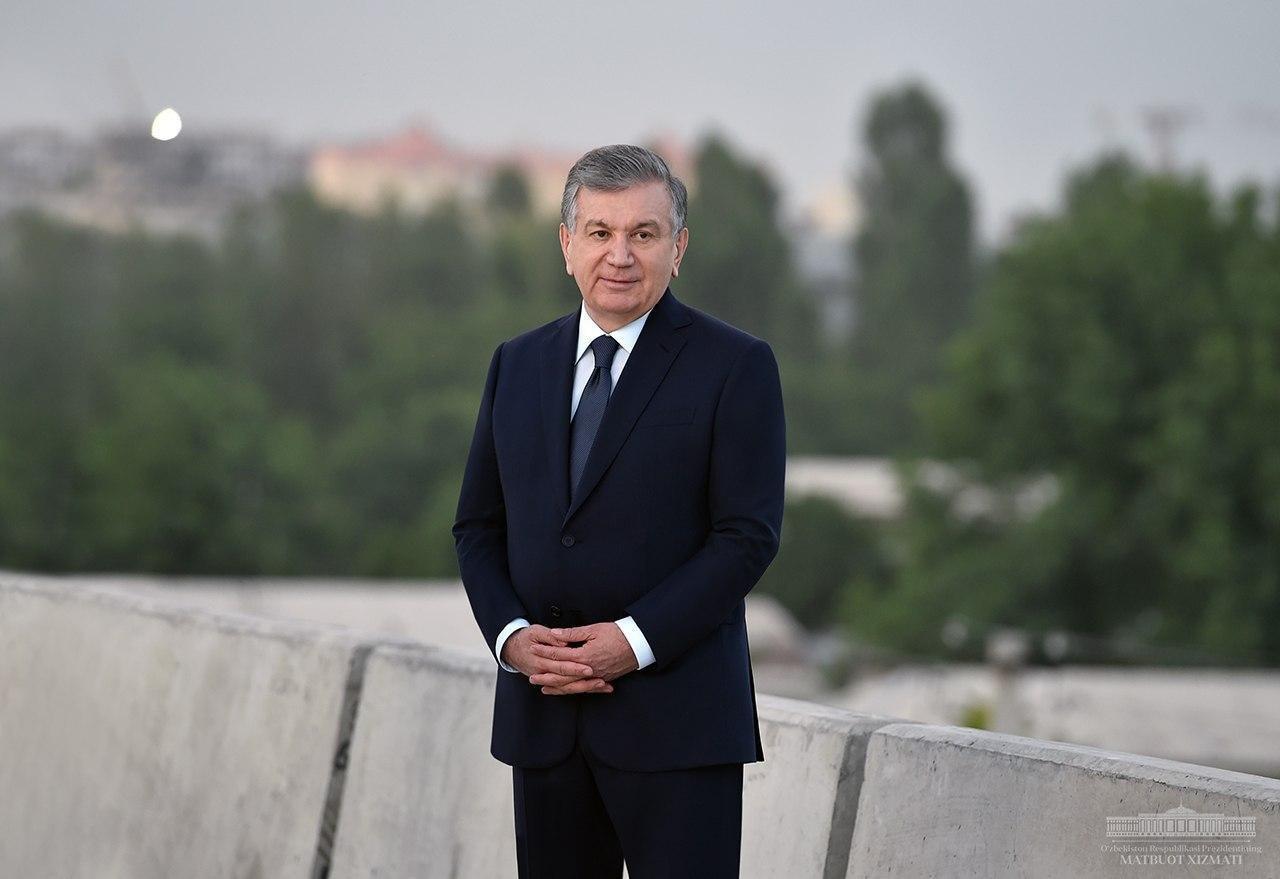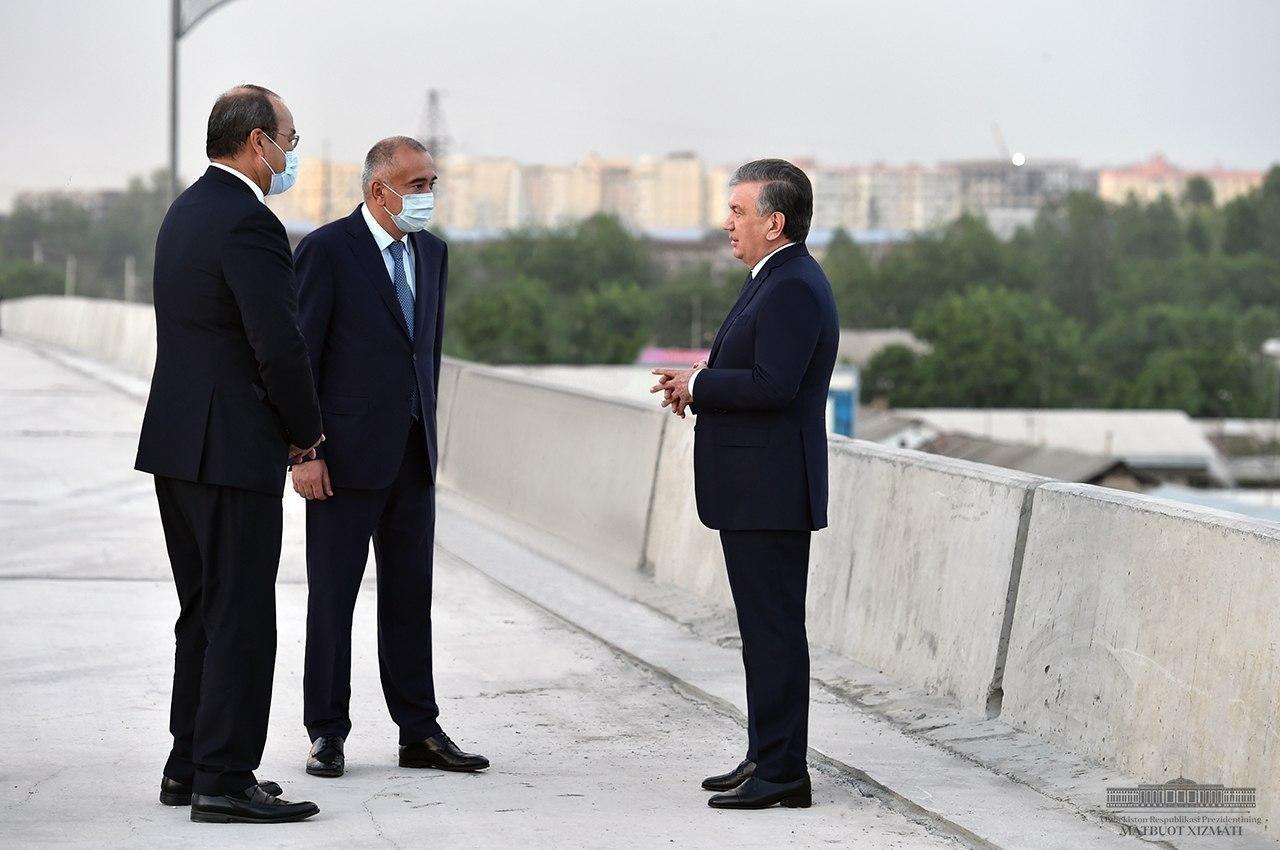
04.06.2020
On June 4, President Shavkat Mirziyoyev traveled to southwestern Tashkent to review the design of a new street and overpass sought to cut traffic to and from Sergeli district.
In the past three years, 460 apartment blocks have been commissioned in the Sergeli district. More than 100 thousand people moved in, and the district’s population has exceeded 276 thousand.
As a result, the load on the infrastructure has naturally increased. In this regard, additional engineering structures, roads and bridges are under construction, connecting the district with downtown Tashkent.
In particular, Uzbekistan Railways JSC is building the 7-kilometer-long Sergeli Overground Metro for 83 million US dollars with stations Choshtepa, Toshkent Khalka Yuli, Sergeli, Afrosiyob, Kipchok and Chinor.
This will create great amenities for passengers. But in the meantime, one should take into account the interests of drivers.
President Shavkat Mirziyoyev pays a great deal of attention to this pressing issue. The development of transport infrastructure was discussed in particular at a meeting with the public of Sergeli district on May 29.
Back then, the head of our state was briefed about the projects of a new road and bridge to connect the Sergeli district with the main part of the city. Today, Shavkat Mirziyoyev got acquainted with those schemes on site.
Worth more than 280 billion soums, the projects were devised in cooperation with the Tashkent city hokimiyat and the Turkish company Kaloyn. Thus, at the intersection of Chuponota Street and the Small Ring Road, a 583-meter overpass will be erected in accordance with it. A new street will be built from this intersection to the Tashkent Ring Road, to continue with a tunnel under the ring road and to be connected to a new bridge under construction on Kipchok Street.
The new road with a total length of 5.6 kilometers will be able to pass 3 thousand vehicles per hour.
Currently, the motor transport arriving in the Sergeli district from the main part of the city and back, largely use the one and the same road – Yangi Sergeli Street. Thus, traffic jams are regular here. The artery is especially packed in mornings and evenings, rush hours. Therefore, owing to the construction of the new road and overpass, the traffic intensity here is expected to decline by 50 percent, while travel time is to be cut by 20-25 minutes.
“The most important factor that influences people’s daily plans, their mood, health is the proper organization of transport. The purpose of building roads and reducing traffic jams is to create convenience for residents and visitors of the city. If we do not do this today, it will get harder tomorrow. We will do it today so that we face less expenses in the future,” Shavkat Mirziyoyev pointed out.
The head of state was presented the Transport Concept of Tashkent.
The model was elaborated on the basis of analysis of traffic flows in the city through a geographic information system. Its goal is primarily to ensure the safety, expediency and economy of the capital’s transport system.
For example, proper traffic management will help save fuel by $ 19 million a year and prevent potential harm estimated at $ 129 million. By optimizing the number and routes of buses, one can achieve an economic effect of $ 2.5 million per year.
The Concept also provides for plentiful amenities such as the development of an automatic payment system, expansion of the number of parking lots and pedestrian crossings.
The President emphasized the need to deliver additional conditions for the movement of pedestrians and bicycles.
“On our roads, vehicles are given excessive priority. Whereas pedestrian traffic, people’s peace of mind and health should be the top concern,” the head of state underscored.
Shavkat Mirziyoyev instructed to test the Transport Concept in one of Tashkent’s districts and to further implement it throughout the capital and in other cities.
The President was also briefed about investment projects envisaging the construction of multi-storey shopping malls, hotels and residential housing in Yakkasaray district.

